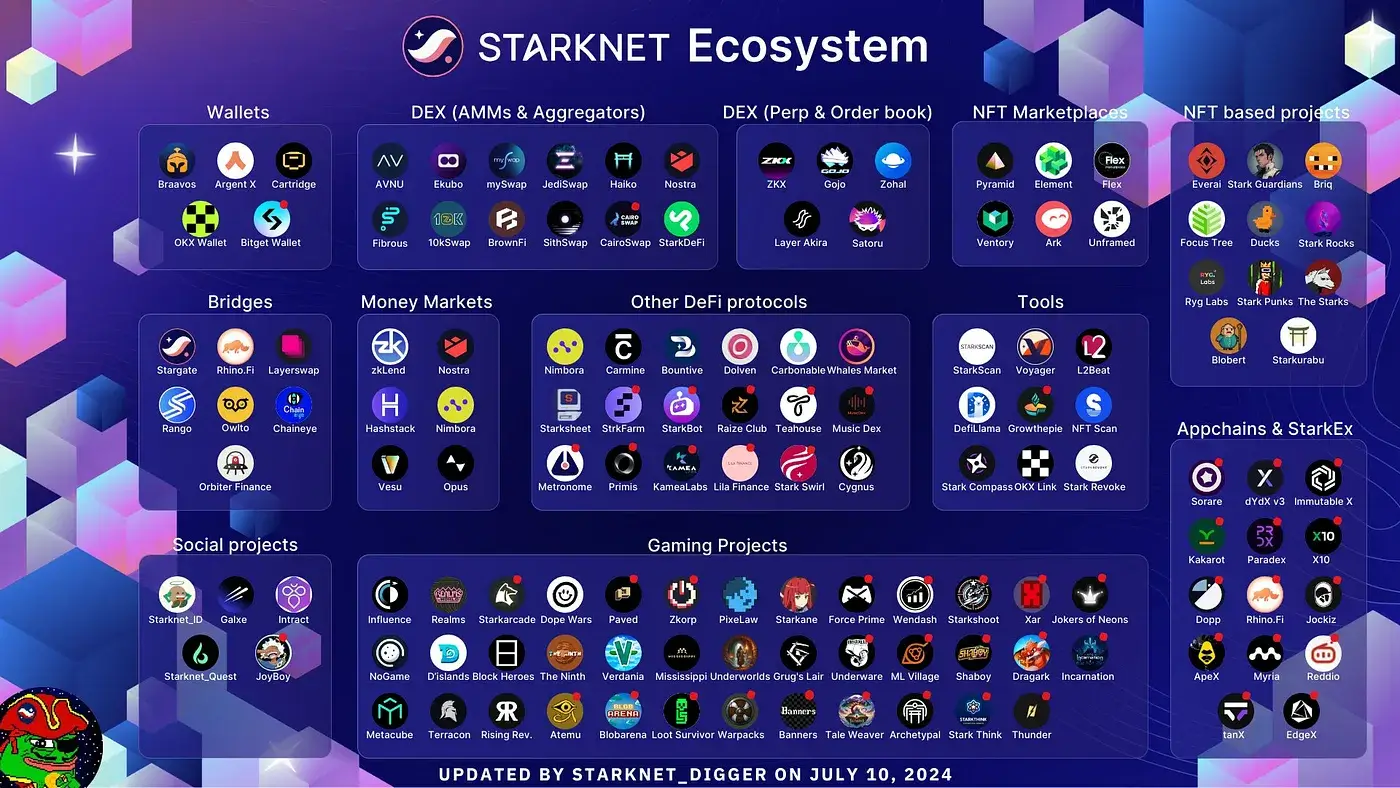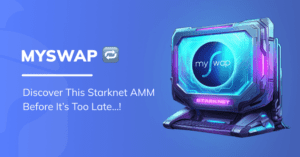How Starknet’s Growth is Shaping the Future of Ethereum

The Starknet ecosystem has been growing rapidly, establishing itself as a major player in Layer 2 scaling solutions. With increasing pressure on Ethereum’s base layer, scaling solutions like Starknet are crucial to unlocking the full potential of the Ethereum network. As Starknet expands, it’s making a significant impact on both users and developers. This article dives into the Starknet ecosystem growth and what it means for everyone involved.

Credits: Starknet_Digger
When Did Starknet Start?
Starknet officially launched on Ethereum’s mainnet in 2021. Developed by StarkWare, the company behind this innovative scaling solution, Starknet was created to enhance Ethereum’s scalability without compromising on security or decentralization.
Before Starknet, StarkWare had already developed StarkEx, another Layer 2 solution that powers popular dApps and DeFi platforms like dYdX, Sorare, Rhino.fi, and Immutable. Building on the success of StarkEx, Starknet was designed to allow developers to scale decentralized applications (dApps) on Ethereum more efficiently.
How Does Starknet Work?
Starknet operates as a Layer 2 scaling solution, leveraging zk-rollups to bundle multiple transactions off-chain and then submit a cryptographic proof to the Ethereum mainnet. This method not only increases throughput but also ensures that all transaction data is secure and verifiable on Ethereum.
Zero-knowledge rollups (zk-rollups) use cryptographic proofs to validate transactions off-chain, ensuring security while lowering costs. Instead of executing every transaction directly on Ethereum, Starknet handles computations off-chain and verifies them with minimal gas fees. For users, this results in faster transaction speeds and lower fees—a game changer for DeFi, NFTs, and gaming.
What Are the Key Advantages of Starknet?
Starknet’s growth is driven by the strong advantages it offers both users and developers:
- Scalability: Starknet’s zk-rollups significantly increase Ethereum’s capacity by bundling and verifying thousands of transactions in one go, ideal for DeFi platforms or NFT marketplaces.
- Security: Despite processing transactions off-chain, Starknet inherits the robust security of Ethereum by posting zk-proofs back to Ethereum’s mainnet.
- Low Gas Fees: By reducing the amount of computation done on-chain, Starknet dramatically lowers gas fees. This makes it particularly useful for on-chain games, where frequent interactions could otherwise become prohibitively expensive on Ethereum.
- Developer-Friendly: Starknet uses Cairo, a specialized programming language optimized for zk-rollups. Although not compatible with Solidity, developers familiar with Ethereum can learn Cairo to build scalable applications optimized for zk-rollup technology.
- Native Account Abstraction: Starknet natively supports account abstraction, which greatly enhances the user experience. It enables multicall functionality—allowing multiple transactions in a single batch, saving both time and gas. This feature powers the Braavos wallet’s biometric 2FA and hardware signers, offering unparalleled security with features like 2FA and 3FA (multi-signer options). With Braavos, users can secure their wallets through multiple layers of protection, making on-chain interactions much safer.
Why Build on Starknet?
The Starknet ecosystem growth is a beacon for developers seeking to build scalable decentralized applications. Starknet offers the flexibility to build high-performance dApps without sacrificing Ethereum’s decentralization and security.
Since Starknet is integrated with Ethereum, developers can tap into Ethereum’s large user base while enjoying faster transaction speeds and lower fees. Moreover, by adopting Cairo, developers can leverage Starknet’s optimized performance for zk-rollups, creating dApps that can scale effectively.
From a user’s perspective, building on Starknet ensures a smooth experience, with faster interactions and cheaper transactions—critical for sectors like DeFi, gaming, and NFTs.
What Gas Does Starknet Use?
Starknet primarily uses ETH as its gas currency, but it also allows users to pay gas fees with STRK, Starknet’s native token. This flexibility helps users manage transaction costs more efficiently.
At the time of writing, transaction costs on Starknet are incredibly low, with fees hovering around $0.001 per transaction, making it far more accessible than Layer 1 Ethereum, where fees can sometimes reach hundreds of dollars. This low-fee structure is particularly beneficial for applications that require frequent transactions, such as blockchain-based games.
What Is the Difference Between zkSync and Starknet?
Both zkSync and Starknet are Layer 2 solutions using zk-rollups, but they have key differences:
- Generalization: Starknet is designed as a general-purpose zk-rollup, allowing developers to build any kind of dApp, while zkSync initially focused on payments and has since broadened its use cases.
- Programming Languages: Starknet uses Cairo, designed specifically for zk-rollups, while zkSync remains more aligned with Solidity, Ethereum’s primary language.
- Ecosystem: The Starknet ecosystem growth has been fueled by a wide range of applications, including DeFi, NFTs, and gaming. zkSync has been more payment-focused but is expanding quickly.
What Is the Throughput of Starknet?
Starknet’s throughput is one of its key selling points. As a zk-rollup, it can theoretically handle thousands of transactions per second (TPS), far more than Ethereum’s Layer 1, which processes around 15 TPS.
Several recent innovations have further enhanced Starknet’s performance:
- Parallel Execution: Starknet now supports parallel execution, allowing multiple transactions to be processed simultaneously, greatly increasing transaction speeds.
- Block Packing: Starknet’s block packing feature allows multiple blocks to be bundled together and sent as a single STARK proof to Ethereum. This dramatically reduces costs, making Starknet even more efficient for users and developers.

Will Starknet Go Up?
Starknet’s future looks bright as the demand for Layer 2 solutions continues to grow. With Ethereum scaling to meet the needs of a growing decentralized ecosystem, Starknet’s role is becoming more critical.
Given the strong technological foundation, continuous innovation, and the rapid expansion of the ecosystem, Starknet is poised to be a major player in the blockchain space. As more developers build on Starknet and more users adopt its decentralized applications, the Starknet ecosystem growth is expected to accelerate, making it an attractive option for both developers and users alike.

Conclusion
The Starknet ecosystem growth is transforming the Ethereum scaling landscape. With high throughput, low fees, native account abstraction, and cutting-edge scalability features like parallel execution and block packing, Starknet is set to be a key player in the future of decentralized applications.
For developers, it offers the tools to build secure, scalable dApps. For users, it ensures faster, cheaper, and more secure interactions with decentralized platforms. As the Starknet ecosystem continues to expand, it will play a crucial role in helping Ethereum scale and evolve.


